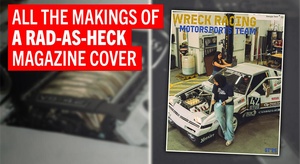When you are talking solar the first question is are you in a net metering state? Net metering means that they add up all the power you use, subtract from it the amount you generate and bill you or credit your account with the difference. There's not a lot of net metering left because it forces the people who don't have solar to pay all the infrastructure costs and pay the prevailing retail rate for a fraction of their power. If you are in a net metering state you may want to take the plunge sooner rather than later because eventually your neighbors are going to want their bills to go down and they are going to quit subsidizing your array. Generally speaking if you get a contract in place before then you should be grandfathered when the laws change.
Assuming you are not in a net metering state, like me, then you will be billed at the prevailing retail rate for the power you use and any excess your system pushes back to the grid will earn you payment at the prevailing wholesale rate. The last time I called my CO-OP the retail rate was @$0.12 per kwh and the wholesale rate was @$0.023 per kwh.
So if I use 5 kw every hour of every day and I generate 5kw of power with my array for 12 hours a day then my bill is 12 hours at free and 12 hours at 5x0.12=$0.60 per hour or $7.20 per day.
With the same usage and double the array at 10kw for 12 hours a day my bill is 12 hrs at free plus 5x0.023= $0.115 refund for 12 daylight hours, $1.38, and the same $7.20 at night for a total bill of $5.82 per day.
In addition you can claim for federal subsidies on the solar power you generate, which is currently something like 10% so you could get $0.13 back from the government at tax time with enough paperwork. My COOP will incentivize me to let them take credit for my solar as part of their mix by upping my wholesale rate to $0.024 per kwh and I don't have to do the paperwork.
Where I am going with all this is that purely grid connected can be expensive to pay off, and probably not pay for itself all alone. You can look up your light hours per year online and call your utility and do the same math for your house.
Where you get ahead from a generation standpoint is when you can store your power and reuse it yourself. Say you installed a Tesla power wall capable of storing the extra 60kwh your array generated. Now during the day you cover your own usage so no bill for usage, but also no power generated to the grid so no refund either. At night, though, you can supply your usage from the battery bank so you also have zero billable usage then too. Essentially you are paying for your storage at a rate equivalent to the difference between wholesale and retail power rates.
For me, about a year ago when I did all the math, it made sense to install about 25kw of solar and 8kw of wind at my house, along with a fairly small battery and inverter/charger equivalent to about 8kw for 4 hours. With the wind and solar resources available at my house that should get me down to @$30/mo for my utility bill, basically just the monthly connection fee.
That setup was roughly $22k at the time, and would have taken @16 years to straight pay off, or closer to 20 if I budgeted for a battery replacement in there.











































